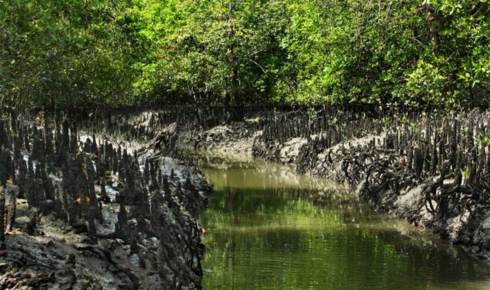Travel sometimes feels like a chase for the unusual — the city with the tallest skyscraper, the beach with the whitest sand, the food that looks the most Instagram-worthy. But every once in a while, you stumble on a place that doesn’t fit into neat categories or trendy lists. The Sundarbans is that kind of place. It isn’t polished. It isn’t predictable. And yet, once you’re there, drifting along its muddy waterways, you realize it’s exactly the kind of experience that lingers long after you’ve left.
The first thing that strikes you is the silence. Not the kind of silence that’s empty, but one that hums with life. Birds call in the distance, water laps softly against the side of your boat, and somewhere unseen, an animal stirs. This is what makes a Sundarban tour so compelling: you don’t just visit, you surrender to it.
The Living Forest
The Sundarbans is more than just the world’s largest mangrove forest. It’s a tidal wilderness where land and water constantly trade places. The trees themselves look almost otherworldly — their roots arched and knotted, clutching the mud like skeletal fingers. It’s not neat, not manicured, but that’s exactly its magic.
Every turn along the waterways reveals something new. A kingfisher perched on a low branch flashes its bright feathers. A crocodile slides lazily into the water with barely a ripple. If you’re lucky, you might even spot Irrawaddy dolphins surfacing playfully. And all the while, there’s that lingering thought: somewhere behind the mangroves, hidden in shadows, a Royal Bengal Tiger might be watching.
Beyond the Tigers
Let’s be honest — most people dream of seeing a tiger when they come here. It’s the big prize, the postcard moment. But truth be told, most visitors never do. That doesn’t mean the trip is any less rewarding.
The Sundarbans is a lesson in patience and possibility. You wait, you watch, and sometimes all you get is still water and rustling leaves. But in those moments, you realize that the magic lies not in what you see, but in being part of a living, breathing ecosystem. You’re not in charge here — nature is.
People of the Edge
What struck me almost as much as the wildlife were the villages clinging to the forest’s fringes. Life here isn’t easy. The soil is salty, storms are frequent, and wild animals are a constant threat. Yet people adapt. Homes are built on stilts, boats are mended daily, and fishing nets stretch out to dry under the sun.
There’s resilience in the faces of those who live here, a rhythm to their days that feels both fragile and unshakable. Many tours include a visit to these communities, and while it’s humbling to see their struggles, it’s also inspiring to witness their bond with the land and water around them.
Life on the Boat
If you imagine the Sundarbans as a quick day trip, you’ll miss the point. The boat isn’t just your vehicle — it becomes your world. You eat there, sleep there, and spend hours scanning the banks with a quiet hope for something to appear.
Meals are simple — often fresh fish from the same waters you’re gliding through — but they taste richer when eaten under an open sky. Nights are anchored in calm. The hum of the engine stops, lanterns flicker on deck, and the world narrows into darkness pierced only by starlight. It’s peaceful, eerie, and oddly comforting.
The Slow Gift of Patience
We live in a world that loves speed — fast internet, fast travel, fast everything. The Sundarbans won’t give you that. Here, the pace is slow, sometimes frustratingly so. But that’s the gift. You learn to sit still, to notice the tiniest details, to let the river’s rhythm guide your thoughts.
And in that slowness, you find something rare: perspective. Suddenly, the constant rush of everyday life feels far away, almost absurd.
Choosing the Right Journey
There are countless ways to explore the Sundarbans, but not all are equal. Some operators cram the experience into a day, rushing through channels with little time to soak in the atmosphere. Others stretch it over two or three days, allowing you to experience both sunrise and sunset over the mangroves, to truly live the rhythm of the tides.
That’s why choosing the right Sundarban tour package is crucial. A good one doesn’t just promise tiger sightings or quick thrills. It offers balance — enough comfort to rest well, but enough authenticity to keep you grounded in the forest’s rawness. The best guides are often locals who understand the ecosystem intimately and know how to respect its fragility.
When to Go
The Sundarbans isn’t welcoming all year. Winters, from November to March, are the best time. The weather is cooler, the skies clearer, and the waterways calmer. Summers can be sweltering and unforgiving, while the monsoon often brings flooding and dangerous storms.
Pack light, but wisely. Cotton clothes, sunscreen, insect repellent, and binoculars for birdwatching. And perhaps most importantly, bring patience. Without it, the forest will feel closed to you. With it, every sound, every ripple, feels like a secret waiting to be shared.
What Stays With You
I didn’t see a tiger. Not even a paw print in the mud. And yet, I left the Sundarbans feeling like I’d witnessed something rare. What stays with you isn’t a single moment but the whole atmosphere — the silence at dusk, the resilience of villagers, the sudden splash of a crocodile, the call of birds echoing across the water.
It’s less of a holiday and more of an encounter — one that reshapes how you think about your place in the world.
Closing Thoughts
The Sundarbans isn’t for everyone. If you want guaranteed sights, luxury resorts, or polished itineraries, you’ll probably leave unsatisfied. But if you’re willing to let go of control, to step into a place where nature writes the rules, you’ll gain something deeper than photographs.
It’s a reminder that the wild still exists, untamed and unbothered by human schedules. And for a few fleeting days, you get to be part of it. That’s not just travel — that’s transformation.

